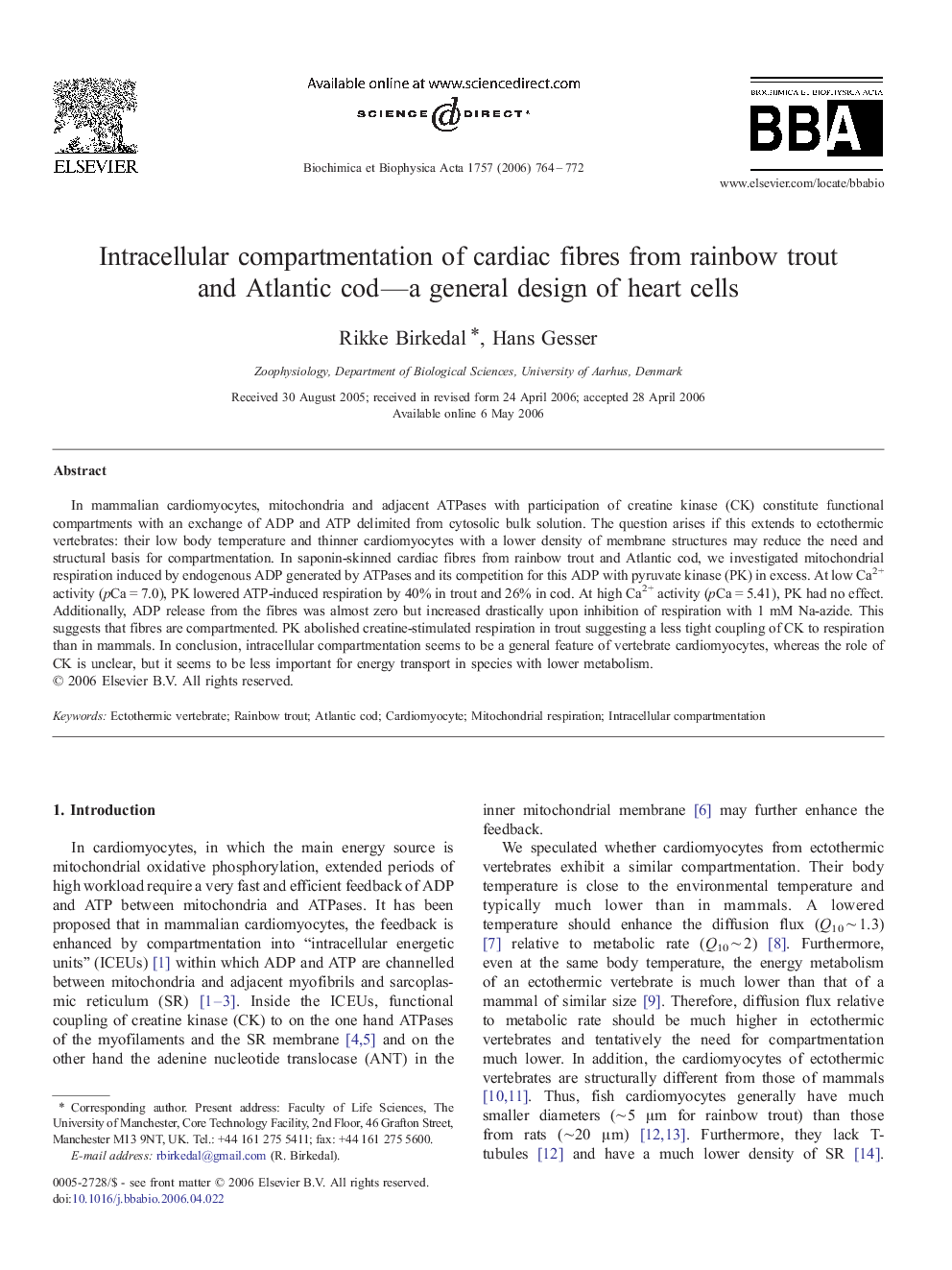| Article ID | Journal | Published Year | Pages | File Type |
|---|---|---|---|---|
| 1943790 | Biochimica et Biophysica Acta (BBA) - Bioenergetics | 2006 | 9 Pages |
In mammalian cardiomyocytes, mitochondria and adjacent ATPases with participation of creatine kinase (CK) constitute functional compartments with an exchange of ADP and ATP delimited from cytosolic bulk solution. The question arises if this extends to ectothermic vertebrates: their low body temperature and thinner cardiomyocytes with a lower density of membrane structures may reduce the need and structural basis for compartmentation. In saponin-skinned cardiac fibres from rainbow trout and Atlantic cod, we investigated mitochondrial respiration induced by endogenous ADP generated by ATPases and its competition for this ADP with pyruvate kinase (PK) in excess. At low Ca2+ activity (pCa = 7.0), PK lowered ATP-induced respiration by 40% in trout and 26% in cod. At high Ca2+ activity (pCa = 5.41), PK had no effect. Additionally, ADP release from the fibres was almost zero but increased drastically upon inhibition of respiration with 1 mM Na-azide. This suggests that fibres are compartmented. PK abolished creatine-stimulated respiration in trout suggesting a less tight coupling of CK to respiration than in mammals. In conclusion, intracellular compartmentation seems to be a general feature of vertebrate cardiomyocytes, whereas the role of CK is unclear, but it seems to be less important for energy transport in species with lower metabolism.
